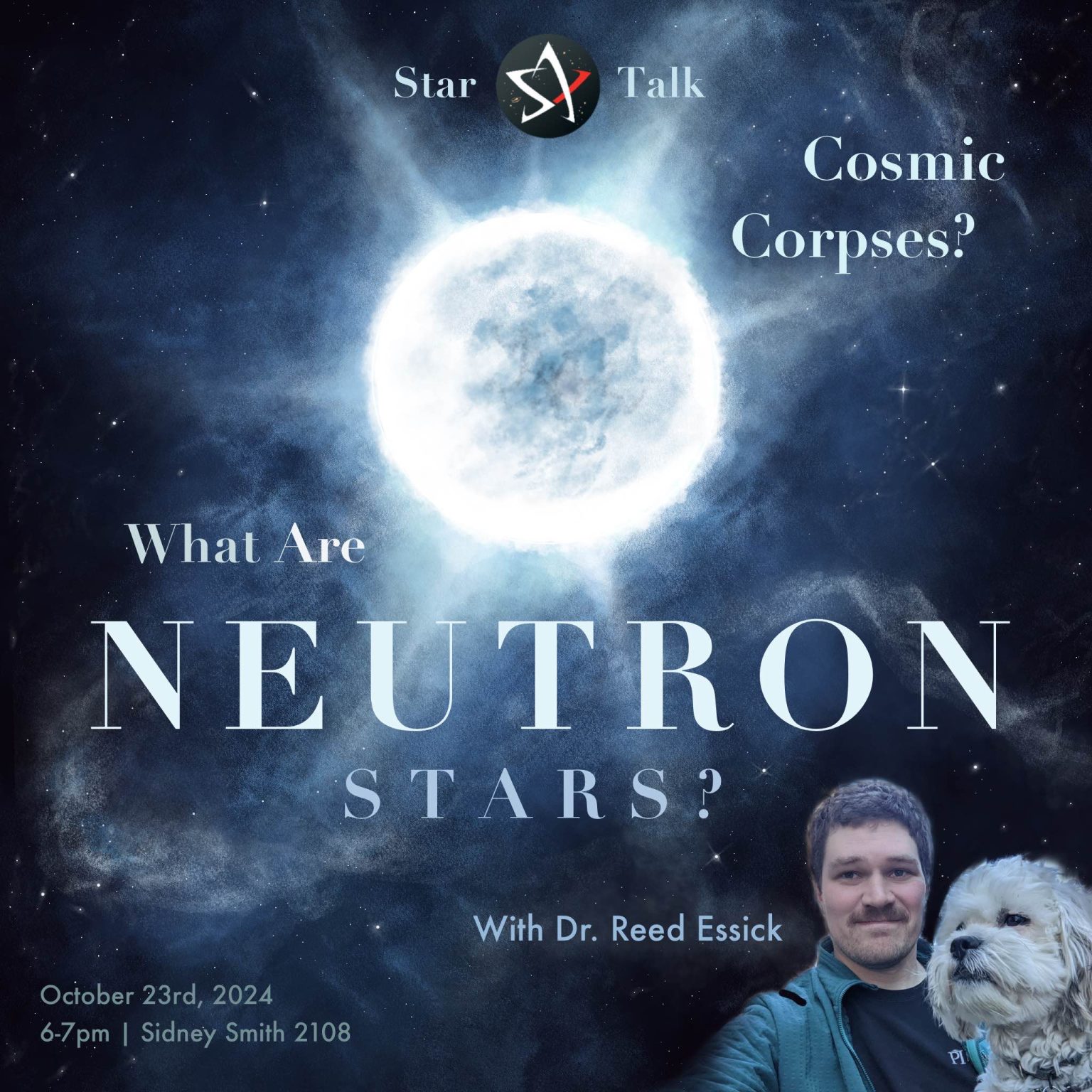Star Talk: What Are Neutron Stars? What Do They Tell Us?

Join us with Dr. Reed Essick at 6:00pm on Wednesday, October 23rd for our next Star Talk!✨
📍SS2108 (Sidney Smith) – 100 St. George Street
Talk Topic: ✧ What Are Neutron Stars? What Do They Tell Us? ✧
Abstract: Neutron stars are extreme astrophysical laboratories perfectly suited to study fundamental physical interactions. In particular, they provide unique ways to test strong gravity and the strong nuclear force. Dr. Essick will review our current understanding of Neutron stars, including their properties, how they form, and how they behave in different astrophysical environments. We will then discuss how modern observations of neutron stars have revolutionized our understanding of the behavior of the densest matter found anywhere in the universe.
Speaker Bio: Prof. Reed Essick obtained a Bachelor of Science (BS) in Mechanical Engineering from Washington University in St. Louis in 2011 before completing his PhD in Physics as part of the Laser Interferometer Gravitational-wave Observatory (LIGO) Lab at the Massachusetts Institute of Technology in 2017. He was a Kavli Institute for Cosmological Physics (KICP) Fellow from 2017 – 2021, and then a Senior Postdoctoral Fellow at the Perimeter Institute for Theoretical Astrophysics. He is now an Assistant Professor at the Canadian Institute for Theoretical Astrophysics (CITA) at the University of Toronto. Prof. Essick studies many aspects of compact stellar remnants, recently focusing on Neutron star structure and composition with a variety of multimessenger astrophysical observations including compact binary coalescences observed through gravitational waves. He contributed in fundamental ways to the first direct detection of gravitational waves from binary black hole (BBH), binary neutron stars (BNS), and neutron star-black hole (NSBH) mergers. He is also an expert on astrostatistics and Bayesian inference, and he routinely develops new statistical approaches to study extreme astronomical phenomena.


